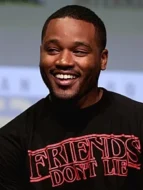Deadline: 30th September 2017
Send Emails To: [email protected]
Hello everyone, it’s time again to announce the director that will be featured for this months Director’s Chair and this month, I’ve decided to go to Mexico so we’ll be covering one of the most respected Mexican filmmakers of the moment, Alfonso Cuaron.
Now Cuaron got his start working in Mexican television, first as a technician, then as a director, before making his fist film, Solo Con Tu Paraje, the success of which allowed Cuaron to get work in the US, first doing a few episodes of the series Fallen Angel, before getting his first American feature with A Little Princess. After the success of A Little Princess, Cuaron moved onto a modernised version of Great Expectations, to mixed results, before going back to Mexico with Y Tu Mama Tambien. After this film got heavy acclaim, Cuaron moved onto the films he became most known for, starting with Harry Potter and the Prisoner of Azkaban.
Now the Harry Potter series, whilst having all the right elements in place, never really found a solid groove with Chris Columbus as director. Once Cuaron came on board though, he brought his stylistic flourishes to the film, with the stylism of Cuaron helping to define the future of the Harry Potter series. From the design of Hogwarts to the way the characters dress and the cinematography of the whole film, all of the other Harry Potter films owe a great debt to the work Cuaron did on Prisoner of Azkaban, but none of the other films, as good as some of them got, were able to capture the brilliance of Prisoner of Azkaban. For a better understanding, take a look at this video here.
Following that, Cuaron made Children of Men, with this film being a good show of one of the main trademarks used of Cuaron’s films, the long take. In other films, the long take is used as a stylistic gimmick, an impressive one, but still a gimmick. In Children of Men though, Cuaron uses it for the plot, filling in the world of the film by using the long take to highlight elements in the background, the way the background characters are treated in particular.
Cuaron’s use of the long take was ultimately perfected in Gravity, which was an amazing technical achievement, one which probably could not have been made beforehand due to limitations in CG technology. Following the release of Avatar and other films like that, more films pushing the boundaries of CG technology could be made and Cuaron used that to his full advantage with Gravity, making one of the rare films that is improved by seeing it in 3D and especially in IMAX.
With that little piece on the work of Cuaron out of the way, below there’s a reminder of the films Alfonso Cuaron has made which you can do pieces on for the month. Once again, send any features you have on Cuaron’s films to [email protected]
- Solo Con Tu Pareja
- A Little Princess
- Great Expectations
- Y Tu Mama Tambien
- Harry Potter and the Prisoner of Azkaban
- Children of Men
- Gravity
I look forward to read whatever you send me.





One thought on “Director’s Chair Introduction: Alfonso Cuaron”